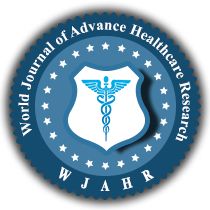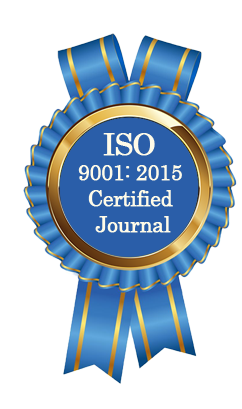| All | Since 2020 | |
| Citation | 105 | 60 |
| h-index | 4 | 4 |
| i10-index | 3 | 2 |
WJAHR Citation 
Login
News & Updation
Best Article Awards
World Journal of Advance Healthcare Research (WJAHR) is giving Best Article Award in every Issue for Best Article and Issue Certificate of Appreciation to the Authors to promote research activity of scholar.
Best Article of current issue
Download Article : Click here
Indexing
Abstract
HISTOLOGICAL STUDY OF SOFT TISSUE SARCOMA IN NAJAF FOR THE 3 YEARS (A RETROSPECTIVE CROSS SECTIONAL STUDY)
Zainab Abdul-Abass Aziz* and Dr. Asaad A. Al-Janabi
ABSTRACT
Introduction: Soft tissue sarcomas (STS) are rare malignant tumors arising from mesenchymal tissues, characterized by histopathological and clinical heterogeneity. Despite accounting for less than 1% of adult malignancies, their varying subtypes and variable clinical presentations pose diagnostic and therapeutic challenges. This study aimed to evaluate the clinical and pathological features of STS cases diagnosed in Najaf, Iraq, over a three-year period. Methods: A retrospective cross-sectional study was conducted at the Kufa Training Center – Iraqi Council for Medical Specializations at Al-Sadr medical city teaching hospital - histopathology lab, Al-Najaf governorate in a period between 1ST October 2023- 1st October 2024. Data of 121 cases of soft tissue sarcoma cases diagnosed in the period of 2021 and 2023 were reviewed. Clinical parameters such as age, sex, tumor site, and type of biopsy were analyzed alongside histopathological findings, including tumor grade, subtype, and size. Results: Among the 121 cases reported, STS demonstrated near-equal gender distribution (50.4% males, 49.6% females), with the majority occurring in individuals aged 61–70 years (20.66%). Excisional biopsy was the primary diagnostic approach (80.1%). The most common histopathological subtypes were undifferentiated sarcoma (18.2%) and gastrointestinal stromal tumors (16.5%). Rare subtypes, including clear cell sarcoma and malignant angiosarcoma, were identified, each comprising less than 1% of cases. Conclusion: This study provides a comprehensive overview of the clinical and pathological spectrum of soft tissue sarcoma in a regional Iraqi population. The findings underscore the significance of histopathological. This insight enhances the understanding of soft tissue sarcoma pathology and contribute in extending the field knowledge with potential implications for regional healthcare strategies and future research.
[Full Text Article] [Download Certificate]
